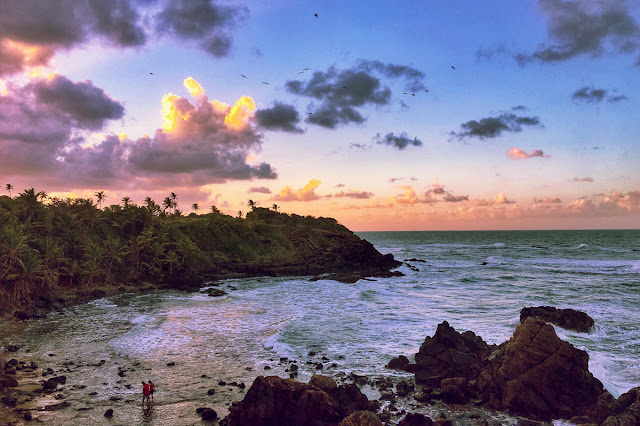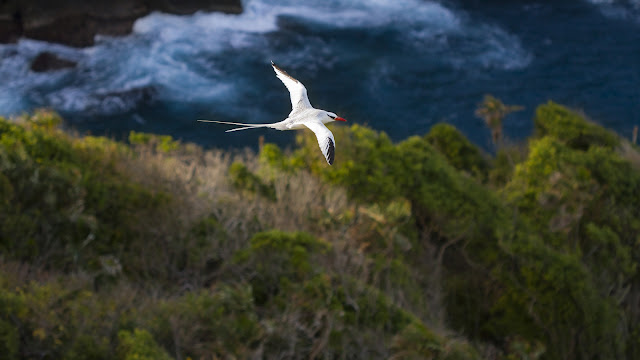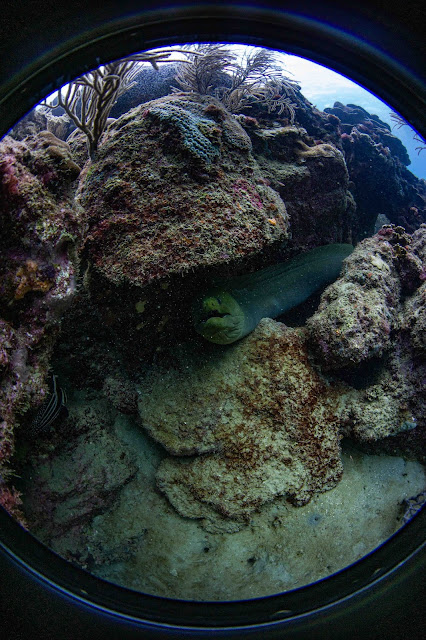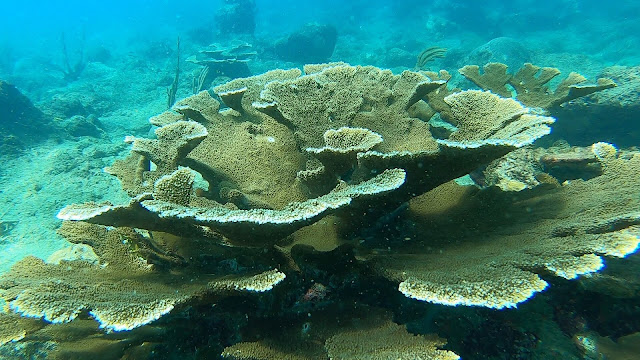Two Islands Six Corners
Faraaz Abdool invites you to explore the unique and diverse habitats and species that exist at every corner of Tobago and Trinidad
Our unique islands at the southernmost extreme of the Caribbean archipelago have distinct geological histories, giving rise to an astounding level of biodiversity. Trinidad and Tobago is a special combination of continents. Drawing from their collective disparate origins, the country boasts the second highest species density of birds on Earth. The impressive species density is the result of the country’s equatorial location along a major migratory pathway as well as the varied habitats that occupy the untamed parts from end to end.

Looking north from Flagstaff Hill, the islands of
Saint Giles are T&T's northernmost land. Photo by Joanne Husain
 |
| For most of the year Sooty Terns are foraging over the open ocean, but when they wish to breed a significant population returns to Saint Giles. Photo by Faraaz Abdool |
NORTHEAST TOBAGO includes the islands of Saint Giles the country’s northernmost land holdings. Situated at just above 11°20’ North, these lie near to the nutrient-rich, deep water of the Atlantic Ocean. The islets scattered around this tip of Tobago attract a variety of seabirds. These graceful creatures of the open ocean visit these uninhabited islands annually to breed. The combination of no terrestrial predators and proximity to excellent fishing is irresistible for thousands of tropicbirds, terns, frigatebirds, and boobies. This end of mainland Tobago features a ridge-to-reef ecosystem, with steep, heavily forested slopes giving way to rocky coastlines - many of which remain relatively inaccessible.

Few airports have a view like Crown Point, Tobago. Photo
by Joanne Husain
SOUTHWESTERN TOBAGO, just 40km away, is a world apart. Here can be found the only stands of mangrove forest on the island. Surrounding coral reefs buffer the impact of the ocean, giving rise to a different cast of shoreline characters. Frequented by an array of plovers and sandpipers, the beaches and slow-moving waterways of southwest Tobago are essential for the survival of countless long-distance migratory birds. While these birds do not visit to breed - their breeding grounds turn to ice each winter - to survive they must spend this time in appropriate tropical climes like ours. Also escaping the cold are many species of warblers - tiny songbirds that breed in the boreal forests of North America and rely on our wetlands to survive the winter months.

Sunset at Galera Point, Toco. Photo by Joanne
Husain

Grande Riviere remains a stronghold of the endemic
Trinidad Piping-Guan, found nowhere else in the world. Photo by Faraaz
Abdool
NORTHEASTERN TRINIDAD by contrast is draped in dense lower montane forest. Only at the wind-blasted fringe does this change to the littoral vegetation of seagrape and gnarled almond trees that line the road along the coast. Just venture a short distance inland to experience large-limbed and bromeliad-laden trees. Within this still relatively untamed forest is the last stronghold of the Trinidad Piping-Guan. Officially listed as Critically Endangered, this large, turkey-like bird is found nowhere else on the planet except in the eastern end of the Northern Range. Birders from all around the world descend upon the remote village of Grande Riviere in particular to have a chance of seeing this imperiled species.

A government-issued sign in the Trinity Hills Game
Sanctuary clearly states the regulations for the reserve, very few of which are
adhered to. Photo by Joanne Husain 
Rufescent Tiger-Heron patrols the slow-moving,
tannin-stained waterways that crisscross the forest in the Trinity Hills Game
Sanctuary. Photo by Faraaz Abdool
SOUTHEAST TRINIDAD - the heel of the boot as some say - is one of the wildest regions on the island. The Trinity Hills Game Sanctuary is an off-limits wildlife reserve, within which no hunting is permitted at any time. All of T&T’s mammalian terrestrial fauna breed in this sanctuary, including the Ocelot, the Caribbean’s only native feline apex predator. Protected from persecution, birds and all forms of wildlife should thrive. Sadly, this is not the case, as hunters brazenly operate in the sanctuary without regard. Surely with suitable management and enforcement, this region should be the seat of repopulation for many species and a very desirable location for visiting adventurers and ecotourists.
Sightings of our endemic Trinidad Motmot on its
namesake island are uncommon, but Tucker Valley in Chaguaramas remains a good
place to spot one in the bamboo. Photo by Faraaz Abdool 
Despite being uninhabited, Chacachacare Island
collects human waste that makes its way from the Gulf of Paria. Photo by
Joanne Husain

NORTHWEST TRINIDAD is considerably more accessible by virtue of infrastructure and proximity to areas of dense human habitation. This western end of the Northern Range is home to a surprising variety of species, including some that are relatively uncommon or rare elsewhere. A hike or bike ride through Chaguaramas can lead to sightings of brightly coloured trogons or cryptic, hidden nightjars. Further west, the Bocas Islands bear a closer geological relation to Tobago than Trinidad - a fact made abundantly clear by the presence of species that are common to these islands and Tobago but remain absent from Trinidad.

Stillness at sunrise at Icacos Lagoon. Photo by Joanne
Husain
 |
| Cleverly disguised as a stalk of vegetation, a Pinnated Bittern rises above the marsh grasses at Icacos Lagoon. Photo by Faraaz Abdool |
SOUTHWEST TRINIDAD brings you through several habitats. Verdant yet gently undulating hills funnel rainwater into waterways that feed swathes of marshland. Although not as large as the more famous Caroni and Nariva Swamps, there are a few notable wetlands on both northern and southern boundaries of the Cedros peninsula. These marshes are rife with species common on the South American mainland, a testament to our connected past. From meadowlarks to yellowthroats, tody-flycatchers to bitterns - these are all species that are absent from the rest of the Caribbean, Tobago included!
Tucked away in this spit of land is also a tiny patch of wet savanna habitat. A remnant from prehistoric times when glyptodons and giant sloths reigned supreme, this disappearing region is characterised by the stands of Moriche palms. Humans remain the biggest threat, with hundreds of acres currently being cleared for cattle ranching. Fortunately, a larger section of this habitat persists in Aripo as well. All efforts must be made to preserve this relic, truly a land before time.
The two islands of Trinidad and Tobago form one country but conceal infinite avenues for amazement in the form of its natural heritage. Peeling back the layers as one drifts inland from each of the six corners reveals hidden wonders and new experiences around every bend. Even in places where we have already removed swathes of forest, all it takes is attention to notice how easily the natural world can regenerate, sustaining life on our islands, and planet.
S



